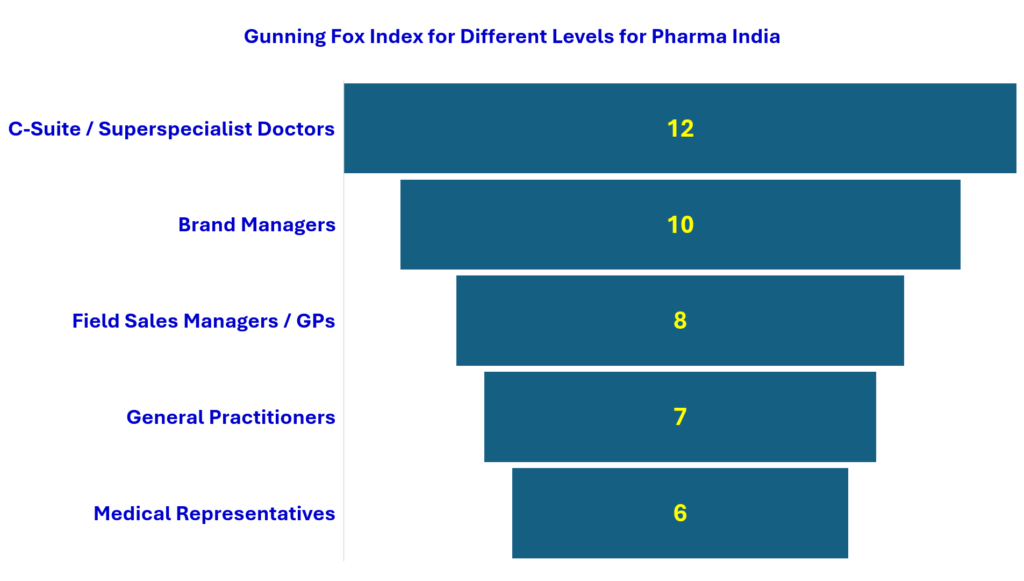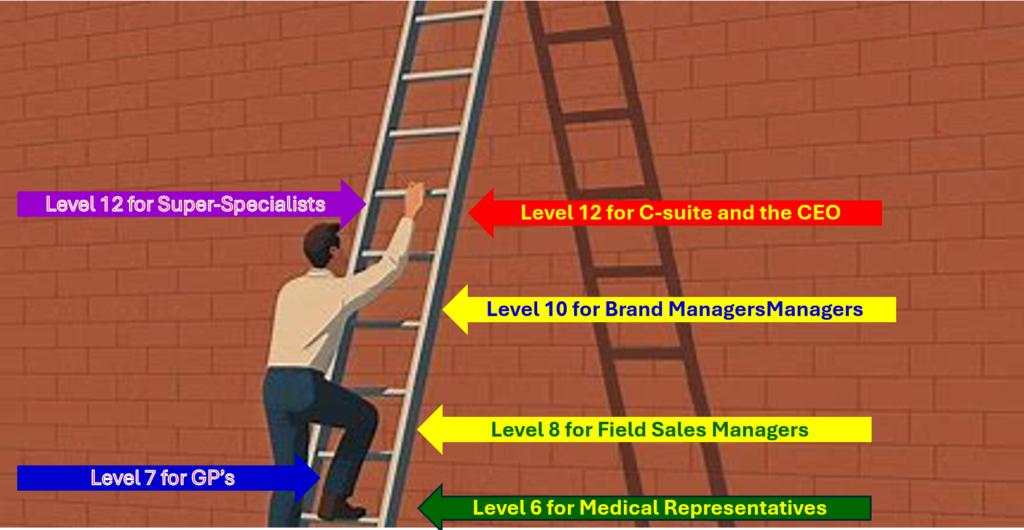Words Everyone Understands: The Magic of Simple Writing – Brand Management 78

Divya Thakre is a graduate of IPHMR, Kolkata and a gold medallist. Having started as management trainee, Divya was three years into her role as a pharmaceutical brand manager, but she had already learned one thing: in pharma, it’s not enough to know what to write and say — you must know how to write and say it.
One Monday morning, she sat at her desk with a task that looked simple on paper:
“Prepare communication on our new pain-relief, metered-dose-release brand, ASPIRE-DPS (Deep Penetrating Spray). It is a metered dose of aspirin spray and a new concept in India. ASPIRE-DPS has all the features and benefits of the gold standard oral aspirin preparations. She had to prepare a message for everyone in Canopus — from medical representatives to the CEO — and also for doctors of distinct types: the low-end general practitioners and the high-end super-specialist rheumatologists.”
She opened her laptop, typed a draft, and proudly read it aloud to herself. But something didn’t feel right. She realised the same words might not work for every audience.
Her mentor, Vinod Dhawan, saw her frown and walked over.
“Divya, ever heard of the Gunning Fog Index?” he asked.
She shook her head.
“It’s a way to measure how easy or difficult your writing is to understand. The higher the number, the harder it is to read. The lower the number, the simpler it is.”
“Think of it like measuring the height of a wall your reader has to climb to ‘get’ your message. If the wall is too high, many will turn away. Your goal is to keep the wall just high enough for your audience — not too low, not too high.”
“See this pic and it will be easy for you to understand.”

The Gunning Fog Index
What is the Gunning Fog Index?
The Gunning Fog Index refers to a readability test that aims to determine how easy a text level is or how difficult it is to read.
The index provides a reader with the number of years of education that he or she hypothetically needs to understand and digest a particular text on the first reading.
Say the Gunning Fog Index is 1—that means someone with just a year of schooling could easily understand the text. But if it’s 16, you’d need around 16 years of formal education to make sense of it.
How to Calculate the Gunning Fog Index?
To calculate a Gunning index score, you need to know the three components.
- Average length of sentence
- Percentage of long words present in the text.
- Sum of the average sentence length and the percentage of long words
To calculate the average sentence length, you need to divide the number of words by the number of sentences in a text sample.
To find the percentage of long words, you divide the number of long words by the total number of words and multiply the result by 100.
A long word is defined as a word with at least three syllables.
Finally, the sum between the average sentence length and the percentage of long words is computed to arrive at the fog index.
There are a few exceptions to what is defined as a long word. Here is a list of the exceptions for long words:
- Words starting with a capital letter such as company names.
- Combined “short words” such as “shareholders” or “over-draft”.
- Words with three syllables just because we added “ed” or “es” (e.g., created or practices)
- Short three-syllable words, such as “media”
For business writing, you aim for a fog index of between 20 to 25. For longer and more technical text scripts, such as official reports, you aim for 30 to 35. Anything more than these suggested figures is getting too complex to be understood by the average reader.
Ideal Gunning Fog Index
The easier it is for the reader to understand what you are saying, the more likely they will want to read your message.
Source: What is Gunning Fox Index – https://corporatefinanceinstitute.com/resources/management/fog-index/
The Paradox
*The Gunning Fog Index tells us how easy a sentence is to read. The funny thing is that its own definition is really hard. It’s so hard that a duffer like me can’t even get it”, Vinod said jokingly 😄
But no need to worry. This illustration makes it very simple.

Vinod Dhawan opened his notebook and wrote:
- Medical Representatives – “Level 6 or 7” → Clear, simple, short sentences, everyday words. They need quick, actionable points.
- Field Sales Managers – “Level 8 or 9” → Still simple, but with a few more details and context so they can guide their teams.
- Brand Managers – “Level 10–12” → Strategic terms, a bit more analysis, but still plain enough to act on without confusion.
- CEO – “Level 12–14” → Strategic big picture, business impact, but no unnecessary medical jargon.
- Low-end General Practitioner Doctors – “Level 7–8” → Clear explanation of benefits, simple medical terms, focus on patient outcomes.
- High-end Super-specialists – “Level 12 to14” → Can handle complex medical terminology, detailed clinical evidence, research references.
“So,” he continued, “your skill as a brand manager is not just writing a good message — it’s tuning it to the reader’s height of understanding. The Gunning Fog Index tells you if you’ve hit the right level.”
“Level 12 for super-specialist? Did I hear you correctly Vinod Sir?”
“Yes Divya! Make it simple. Make it memorable. Make it inviting to look at. Make it fun to read. That’s what the great copywriter Leo Burnett said! Simple words build trust. Even the smartest minds appreciate clarity over complexity. Clear writing shows respect for the reader’s time. Even experts prefer ideas they can grasp without a mental workout.”
“Thank you so much Vinod Sir! I am clear now.”
Divya rewrote her communication, tailoring it for each audien
1 . For Medical Representatives
“Aspire-DPS works fast on joint pain. It’s safe for long-term use and helps patients move freely. Key message: Tell doctors it starts working in just 5 minutes.”
2. For Field Sales Managers
“New Aspire-DS reduces joint pain within one hour. Clinical trials show 85% patient improvement in morning stiffness instantaneously. Focus on doctors treating arthritis and morning stiffness. Encourage your teams to highlight early relief.”
3. For Brand Managers
“Brand Aspire-DS positions itself as a fast-onset, long-term in morning stiffness management. Strategy: Target GPs and orthopaedists. Key differentiator: clinically proven 5-minute onset.”
4. For the CEO
“Aspire-DS launch aligns with our portfolio strategy to dominate the morning stiffness segment. Expected to capture 12% market share in year one through early relief positioning.”
5. For Low-end GPs
“Helps patients with arthritis walk without pain again. Safe for long use. Works in one hour — patients feel better from the first day.”
6. For High-end Super-specialists
“Randomised double-blind trials show 85% improvement in joint mobility within 7 days, onset in just 5 minutes. HEOR studies have shown how the patient can save Rs. 38000 every year. Superior to standard NSAIDs in long-term safety profile.”
When she looked at the six versions side by side, she smiled. Each one was tuned to the “height of the wall” her reader could comfortably climb.
Vinod Dhawan nodded. “That’s the Gunning Fog Index in action. It’s not just a number — it’s a way to respect your audience’s time and mind. In medico-marketing, the right level of clarity is the first step to persuasion.”
And that day, Divya learned one of the most important truths in marketing communication:
“Your message isn’t great unless it’s great for the one who receives it.”
Now Divya’s story is ready to become a memorable teaching piece for pharmaceutical brand managers.